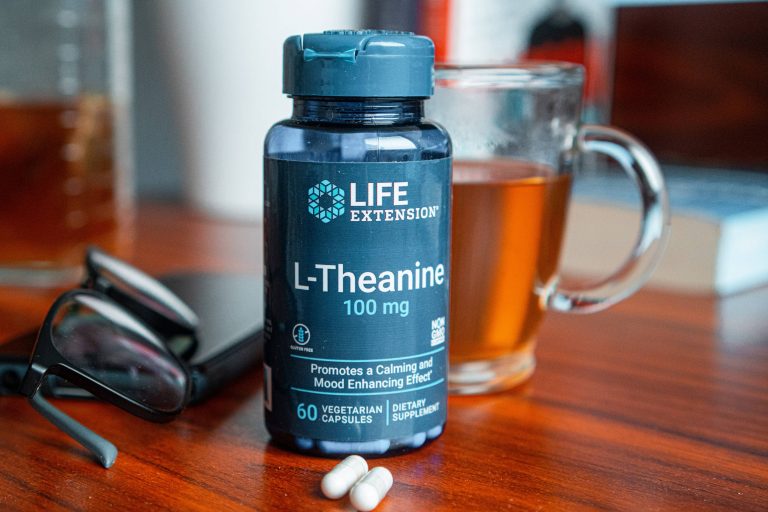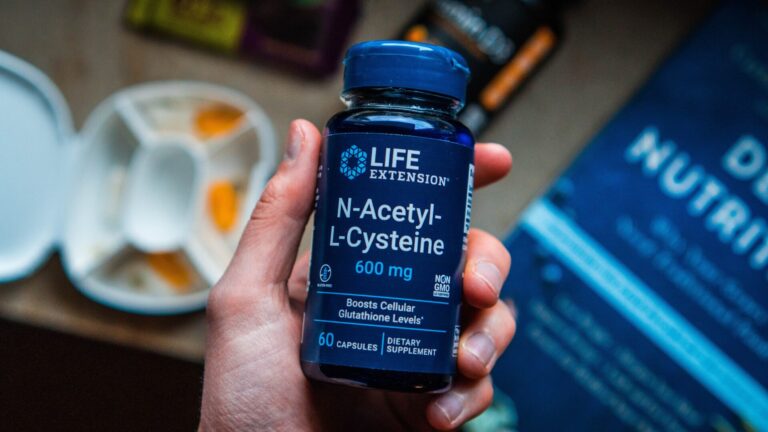4 Scientific Ways to Lose Weight On a Diet
Fad diets are taking attention away from what truly matters. To lose weight on a diet, one should follow a few scientific-backed principles. While there are key individual differences, most people will do great by following a few simple rules.
The first simple rule is a calorie deficit. And yes, it’s much easier to eat a bit less, than try to overtrain to lose weight. Training your body to use fats for fuel, when there’s not enough glucose is another tip.
Introducing more fiber, eating slower, and being more mindful helps one become fuller faster. Increasing protein and gaining muscle mass helps keep a more favorable body composition.
Calorie Deficit on Weight Loss
Energy deficit is the primary factor that determines weight loss. Once energy expenditure (calories burned) exceeds energy intake (calories consumed) the result is weight loss. This is the simple formula for weight loss. (1)
In other words – to shrink, we need to ingest fewer calories than we burn. The right way to do it is by measuring your basal metabolic rate (BMR) and calorie intake, positioning yourself at a deficit. While it sounds inconvenient, and intuitive eating is sexier, this is the right way to do it. In only a couple of weeks, we can get a great sense of how much we eat, and which foods contain how many calories.
The first stage of weight loss is characterized by a greater loss of fat-free mass (glycogen, intracellular fluid) or what we like to call, water. During the second, settling phase, fat oxidation increases which reduces fat %. (2)
While very low-calorie diets (VLCD) at 800 to 1200 calories have been used for weight loss in overweight and obese people and effectively reduced waist circumference, total weight, and fat % – it’s important to understand the context. These aren’t sustainable diets, these are heavy caloric restrictions strategically placed to stimulate metabolic changes (shifts in glucose homeostasis, autophagy, insulin secretion) short-term. (1)
Considering we can’t burn more than ~ 1-2 lbs of fat per week, it’s smarter to utilize a moderate caloric deficit of about 300-500 kcal. This way we can still stimulate fat oxidation while minimizing severe drops in glucose and energy, or muscle and water loss. This is important as fat loss is the priority many have when talking about weight loss.
A decline in metabolic rate or slower metabolism is one metabolic change that occurs in response to a negative energy balance. The body becomes more efficient at using fuel, which leads to improved mitochondrial efficiency and reductions in sympathetic nervous system activity, thyroid hormones, and insulin. (2)
To an extent, caloric deficit leads to positive metabolic adaptations that help us increase energy levels and maintain healthier weight. Just as with fasting, it can enhance insulin sensitivity, blood sugar, and cholesterol levels, and reduce inflammation.

Calories in, Calories Our
Take note that calories-in vs. calories-out is a simple way of presenting the weight loss formula. Calories have their function in the body, which ultimately determines your metabolic health and energy levels – thus affecting weight loss. Calorie = calorie is an oversimplification, in other words – it’s important what we eat.
The most practical way to induce a caloric deficit is through a reduction in caloric intake, as opposed to a sharp increase in physical activity. The reason for that is metabolic rate and hunger hormones. Trying to lose weight by exercising, while maintaining an unhealthy (calorie-packed) diet is a losing battle. We can’t exercise more than we can eat, it’s way harder.
Severe increases in energy expenditure (training) and drops in energy intake (VLCD) throw our hunger hormones off balance. It stimulates appetite by increasing the ghrelin hormone. The consequential fat loss reduces leptin levels, which signal satiety – so we tend to eat more.
Conclusion
A caloric deficit is the most important factor for weight loss. Eating fewer calories than we burn results in weight loss. The most practical and sustainable way to lose fat is a moderate 300/500 kcal deficit until one achieves the desired weight.
Ketosis & Fasting and Metabolic Flexibility
Independent of macronutrient structure (LCHF, LHCF), research found that low-calorie diets were effective in reducing weight. Fat restriction, fixed energy deficits, and meal replacements were some of the more effective strategies. (3)
While this brings forth the importance of a calorie deficit, weight loss sustainability can be greatly affected by our energy levels, metabolic health, and hunger. This is where fasting and ketogenic diet shine as practical strategies for fat loss.
Fasting and keto work by a similar mechanism, both putting the body in a glucose-deficient state. The body is then forced to utilize fats for fuel, to produce energy, and sustain life. (4) (5) (6)
Fasting does this by reducing the non-feeding window, while keto does it by excluding carbohydrates and focusing on fats more. The end goal is increased fat oxidation.
These approaches train the body’s ability to shift from glucose to fats for fuel, so-called metabolic flexibility. This comes with a myriad of benefits like improved glucose homeostasis, insulin sensitivity, cholesterol levels, and lower inflammation. (7) (8) (9) (10) (11) (12) In a way, it optimizes the body’s machinery to produce energy efficiently. This makes maintaining a healthier body weight way more sustainable.

While ketogenic diets are relatively restrictive, LCHF or low-carb high-fat alternatives can fit in. Again, the ketogenic diet is a more aggressive way of stimulating such metabolic shifts, not necessarily a sustainable diet. Once the body starts utilizing fats to meet energy demands, fat % is reduced over time.
Partially, this solves another huge pain point of weight loss, which is low energy. While research in this area is still evolving, there’s a link between the metabolic stress from fasting (or calorie restriction) and enhanced mitochondria function. (13) Enhancing mitochondria function translates to greater energy-creation efficiency.
The general goal is to teach the body to derive its energy from fat as well, instead of always functioning in a glucose re-feeding mode. Whether that’s done through fasting (skipping breakfast), keto (eggs-avocado) or just slightly reducing simple carbohydrates (pasta, bread, white rice) and excluding processed sugars (chocolate bars, energy drinks), it doesn’t matter.
Conclusion
Fasting and a Ketogenic diet can increase fat oxidation by reducing the frequency or quantity of glucose ingestion. This improves markers of metabolic health (insulin, cholesterol, blood sugar) which enhances energy creation.
Fiber Intake on Fullness and Satiety
Fiber is a type of complex carbohydrate found in plant-based foods. It’s a non-digestible substance that supports digestion. There are two main types, soluble and insoluble fiber.
Soluble fiber dissolves in water and creates a gel-like consistency, slowing the passage of food. Beta-glucan and glucomannan are examples of soluble fiber. It’s the preferred type if weight loss is the main goal. (14) On the other hand, insoluble fiber speeds up digestion, as it helps bulk up the stool. This improves digestion as it speeds up the passage of food through the gut.
Increasing the amount of soluble fiber by about 10% has been linked to a decrease in visceral fat of about 3.7%. (15) Supplementing fiber [PGX] has shown favorable results, as it reduced body weight and improved BMI scores, due to reduced eating frequency and intake of grains. (16)
Fiber-rich foods are chewed for longer. The process of mastication can improve nutrient absorption, saliva, and gastric acid production, which helps increase satiety and prevents overeating. Additionally, the added volume of food signals to our brain that we’re full, earlier on. Research shows an inverse relationship between dietary intake and type II diabetes. Regular fiber consumption seems to prevent weight gain and attenuate glucose absorption rate. (14)
Studies show a link between fiber intake and weight loss. Interestingly, it was the main factor in improving dietary adherence – which improves sustainability. In other words, it’s easier to follow a high-fiber diet, regardless of macronutrient structure or caloric intake. (17) (15)
Moreover, high-fiber foods tend to have a lower energy density, meaning they have fewer calories than their volume. Additionally, fiber may facilitate weight loss by increasing the calories burned through fermentation in the large intestine, which requires energy.
While it is not necessary to consume large amounts of fiber to obtain these benefits, it is generally recommended to aim for a daily fiber intake of at least 25-35 grams.
Conclusion
Fiber is an essential nutrient in the diet that helps manage weight by increasing satiety. Increased intake of fiber (25-35 grams) is linked to weight loss and a lower incidence of type II diabetes.

Protein on Muscle and Metabolism
The metabolic rate determines our energy expenditure. Faster metabolism means burning more calories, thus tipping the scale to greater energy expenditure which is favorable for weight loss.
Protein is a vital component for preserving muscle mass, which plays an important role in weight loss due to its effect on metabolic rate. The goal is to increase fat loss but preserve muscle, and a fast metabolism. The common problem with severe caloric restriction is a lack of protein, which degrades muscle mass, slowing our metabolism, which defeats the purpose.
Protein supports muscle protein synthesis, leading to a more favorable ratio of lean to fat mass. This is important as leaner people or those with higher FFM expend more calories daily, having a higher RMR [resting metabolic rate]. (18) (19) (20)
In comparison to fats and carbs, protein has a higher thermic effect. We burn about 20-30% of the energy content when ingesting protein, compared to carbohydrates [5-10%] and fat [1-3%]. Increasing protein intake [relative to carbs or fats] can thus result in a faster metabolism. (21) (22)
Furthermore, protein helps control appetite and reduce hunger as it stimulates the release of hormones such as glucagon-like peptide-1 (GLP-1) a satiety-promoting hormone, and decreases ghrelin levels, a hunger-stimulating hormone. (23) (24)
It is generally recommended to consume a minimum of 0.8 grams of protein per kilogram of body weight per day, although higher amounts may be necessary for individuals who are physically active or seeking to preserve muscle mass during weight loss. For a 75 kg [165 lbs] person that’s about 60g (minimal for maintenance) (25) and about 80-100 for building muscle (or sustaining a higher % of muscle).
Conclusion
Protein is an essential macronutrient that helps preserve muscle mass and prevent a decrease in metabolism rate. It has a higher thermic effect compared to fats and carbs, increasing energy expenditure. Additionally, it controls appetite and satiety which can prevent overeating.
Metabolic Flexibility and Metabolic Rate
To put things into context, when we talk about weight loss, most of the time we mean fat loss. Most people [including overweight] will profit from preserving muscle mass, as a leaner physique [defined by a higher lean mass to fat-mass ratio] is important for metabolic health.
This brings forth the importance of metabolic rate and metabolic flexibility, which determines the right type of dieting.
- Metabolic flexibility is the ability to switch to fats [ketones] for fuel. This shift between carbs and fats has numerous benefits like improved insulin sensitivity, higher energy levels, and lower blood sugar. Caloric deficit, fasting, ketogenic or keto-mimicking diets [LCHF] all target this. By reducing the amount/frequency of glucose consumption, we’re able to utilize fats better.
- The metabolic rate determines our energy expenditure, which is an important piece of the weight loss formula [calories in vs. calories out]. By increasing protein intake, weight training, and preserving higher levels of lean muscle mass we can keep our metabolism fast.
The reason we ponder upon these two is simple. Most FAD diets that claim to work fast are nothing but a short-term strategy to lose weight by manipulating water content. It’s impossible to lose [oxidize] 2 lbs of fat a day. A much more sustainable approach would be to focus on a light caloric deficit of about 300/500 kcal daily, increasing fiber and protein intake, and doubling in more NEAT activities.
Top 4 Dietary Strategies for Weight Loss
So, once we’ve cleared a few things out of the way – we don’t want water loss, slower metabolism, or hunger games, what are the practical dietary strategies to help us win the weight loss game?
- Calorie deficit – the only formula that works. Calories in must be lower than calories out. The most convenient way to achieve this is a light caloric deficit of about 300-500 kcal daily until the desired weight is achieved.
- Fasting or Ketogenic Diet – fasting, ketogenic diet, or keto-mimicking diets are great at teaching the body to utilize fat for fuel. Additionally, they can improve numerous metabolic health markers [glycemic control, insulin, cholesterol] which help increase energy levels and make weight loss more sustainable.
- Increase Fiber Intake – Fiber is a non-digestible nutrient that helps support digestion, increases satiety, and improves nutrient absorption. Ingestion of about 25-35 g of fiber seems to be close to optimal to improve diet adherence and feelings of fullness which makes weight loss sustainable.
- Increase Protein Intake – it’s the vital nutrient that helps build and preserve muscle tissue, which prevents the drop in metabolic rate seen with dieting. Protein also has a higher thermic effect on food, meaning we burn more calories digesting it, relative to carbs and fats. Additionally, it suppresses appetite and improves body composition and muscle quality.








